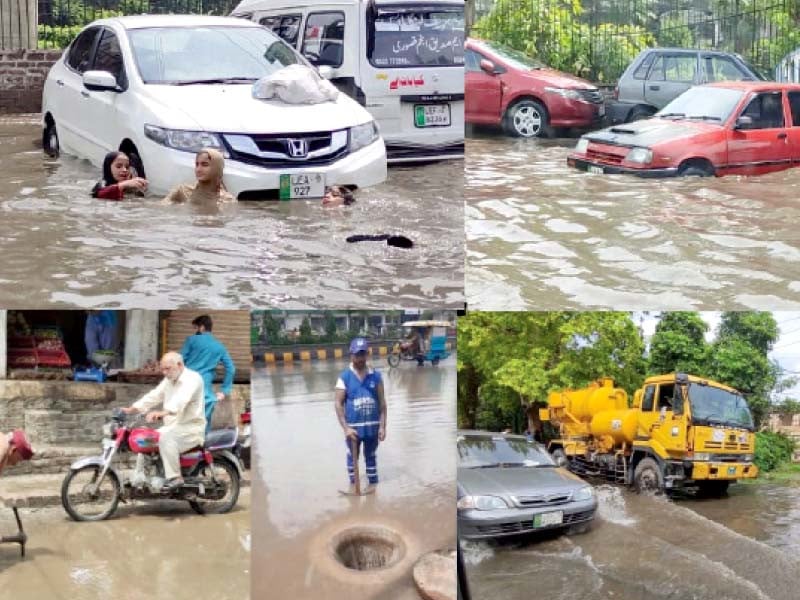
Monsoon rain continued in Lahore and other areas across Punjab on Saturday, resulting in a substantial decrease in heat and humidity.
The citizens breathed a sigh of relief as the weather turned pleasant, but the rain badly affected their routine activities in Lahore and other cities.
In addition to other problems created by pooled rainwater on the roads and streets of the provincial capital, the threat of increase in cases of dengue fever also intensified. Dengue larvae were found at more than 700 locations.
It continued to rain intermittently in Lahore throughout the day. According to the meteorological department, more rains are expected in Lahore and other areas of Punjab in the coming days.
Staff of the departments concerned, including the Water and Sanitation Agency (WASA) and Lahore Waste Management Company (LWMC), remained active in the city areas to drain the water and ensure continued civic facilities for the citizens.
The highest rainfall in Lahore was recorded at Paniwala Talab in the old city area at 132 milimetres, followed by 118mm in Farrukhabad, 105mm at Chowk Nakhuda, 60mm at Jail Road and Lakshmi Chowk, 49mm in Gulberg, 32mm in Mughalpura and 26mm at the airport.
Samanabad, Nishtar Town, Johar Town, Gulshan Ravi and other areas are received rain.
Read CM orders flood prevention plan
Rainwater accumulated in the streets and alleys of the city, causing problems for the residents and commuters in various areas.
WASA Managing Director Syed Zahid Aziz told The Express Tribune that all the officials of the agency were actively striving to facilitate the citizens along with the staff of the LWMC and other departments. He said the WASA employees would remain in the field till complete drainage of rainwater from the city.
He said all disposal stations were fully operational and the city would be cleared of rainwater in a few hours.
On the other hand, the meteorological department announced that a new system of torrential rains was likely to enter the city.
In view of the forecast, WASA officials geared up to remain active on field duties and ensure the proper operation of the disposal stations. Electricity generators are also used in the operation due to power outages. The efforts of Lahore WASA were focused on draining the rainwater into the Ravi river.
The rains in Lahore have also increased the risk of a dengue outbreak. Dengue larvae were found in 788 places in the city during the past 24 hours. The risk of the spread of dengue fever increased due to the accumulation of water after the fresh rain.
The dengue virus has re-emerged in the low-lying areas due to the ongoing rains. The confirmation of the presence of the larvae at hundreds of spots in the city confirmed the fears in this regard.
The rains have created dengue mosquito breeding hotspots in most areas of the city. Meanwhile, the district administration has stepped up measures to eradicate the dengue larvae.
Published in The Express Tribune, August 1st, 2021.



1732266251-0/Josh-Brolin-(1)1732266251-0-165x106.webp)
1732266343-0/BeFunky-collage-(82)1732266343-0-165x106.webp)

1726722687-0/Express-Tribune-Web-(9)1726722687-0-270x192.webp)













COMMENTS
Comments are moderated and generally will be posted if they are on-topic and not abusive.
For more information, please see our Comments FAQ